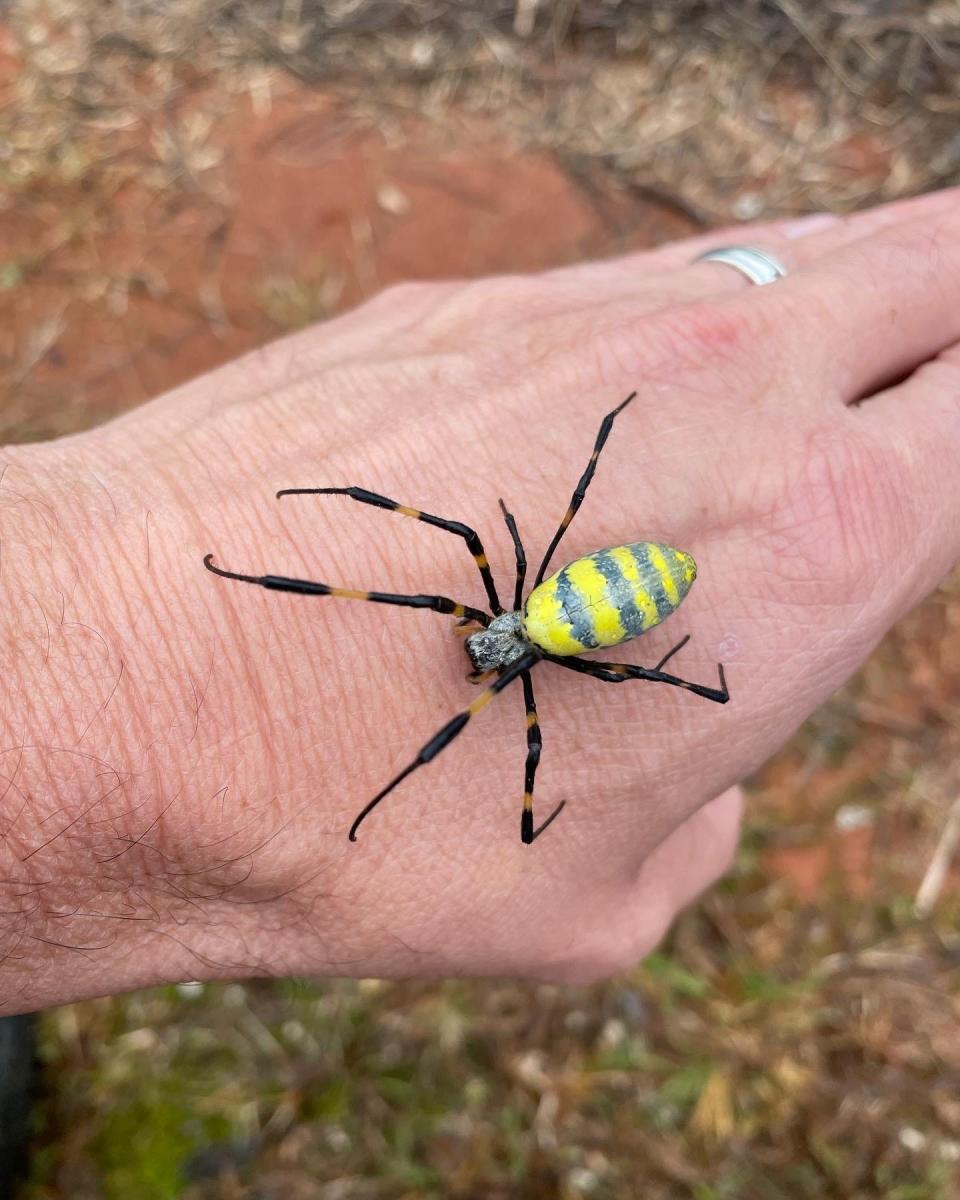Large, flying, invasive Joro spiders are on their way to NJ. Everything you should know
Attention New Jerseyans, sorry to have to tell you this, but you might want to be on the lookout for some new creepy crawlers heading our way.
In November, Dr. David Coyle, entomologist at Clemson University, told NorthJersey.com that the large, invasive, flying Joro spider could be making its way into the state "by next year for all we know."
We have made it to "next year," and many are bracing for these eight-legged travelers to arrive in the tri-state area any day now, according to recent reports including one from New Jersey Pest Control who said that the "Joro spider invasion" could reach New Jersey by later this year.
Although "flying spider" definitely sounds scary, there isn't really anything to worry about. Here is everything you need to know about the incoming Joro spider.

Where does the Joro spider come from?
The Joro spider is originally found in east Asia and is thought to have arrived in the United States in 2010. Their first official U.S. spotting was in Georgia in 2014.
Since then, Joro spiders have been spotted in several other states including South Carolina, North Carolina, Tennessee, West Virginia, Oklahoma, Alabama, and Maryland.
Where are Joro spiders going?
They are expected to eventually inhabit most of the eastern United States.
"Those data show that this spider is going to be able to inhibit most of the eastern U.S. It shows that their comfort area in their native ranges matches up very well with much of North America," said Dr. Coyle in an October article that detailed the findings of his peer-reviewed study on Joro spiders.
How do Joro spiders travel?
Joro spiders travel in a couple of different ways.
The first is called ballooning where they put out a strand of silk that could cause them to be picked up by the wind. If the wind picks them up, they could travel as far as the wind takes them in whichever direction the wind is blowing.
The second method is through human involvement. For example, if they are hanging out on a patio set and then the patio set is picked up and moved, they will likely move with it.
"The trick with a critter like this that hitchhikes is that they can be anywhere at any time and move really fast," Coyle told NorthJersey.com in November. "It is really hard to predict how fast they go. On their own they appear to spread a couple hundred miles a year. However, human mediated movement could take them much farther than that."
Insects How to check for bedbugs now that summer travel season is here
What do Joro spiders look like?
When they get here, the Joro spiders are going to be hard to miss as they can grow to be about an inch long with a leg span of up to four inches.
Adult females are large and have blue-black and yellow stripes on their back.
Male Joro spiders are smaller and have darker stripes.
They weave webs in circular patterns between things such as manmade structures or trees and their webs can grow anywhere from only a few feet to 12 feet across.
Are Joro spiders dangerous?
So far, according to Coyle, there is no evidence of Joro spiders being dangerous to people or pets and there has not been any reports of people being bitten by them.
While they are venomous to insects, it has been reported that their mandibles aren't even strong enough to puncture human skin.
Will Joro spiders impact native wildlife and biodiversity?
Spiders are indiscriminate predators, according to Coyle, so they will eat pretty much anything that ends up in their webs from the invasive spotted lanternfly to a rare insect.
Invasive species are typically not a positive thing, but Joro spiders' exact impact is not yet known by scientists.
However, as reported in November, scientists do know two things ... Joro spiders are on the move, and they are here to stay.
This article originally appeared on NorthJersey.com: Joro spiders could be arriving in New Jersey soon
